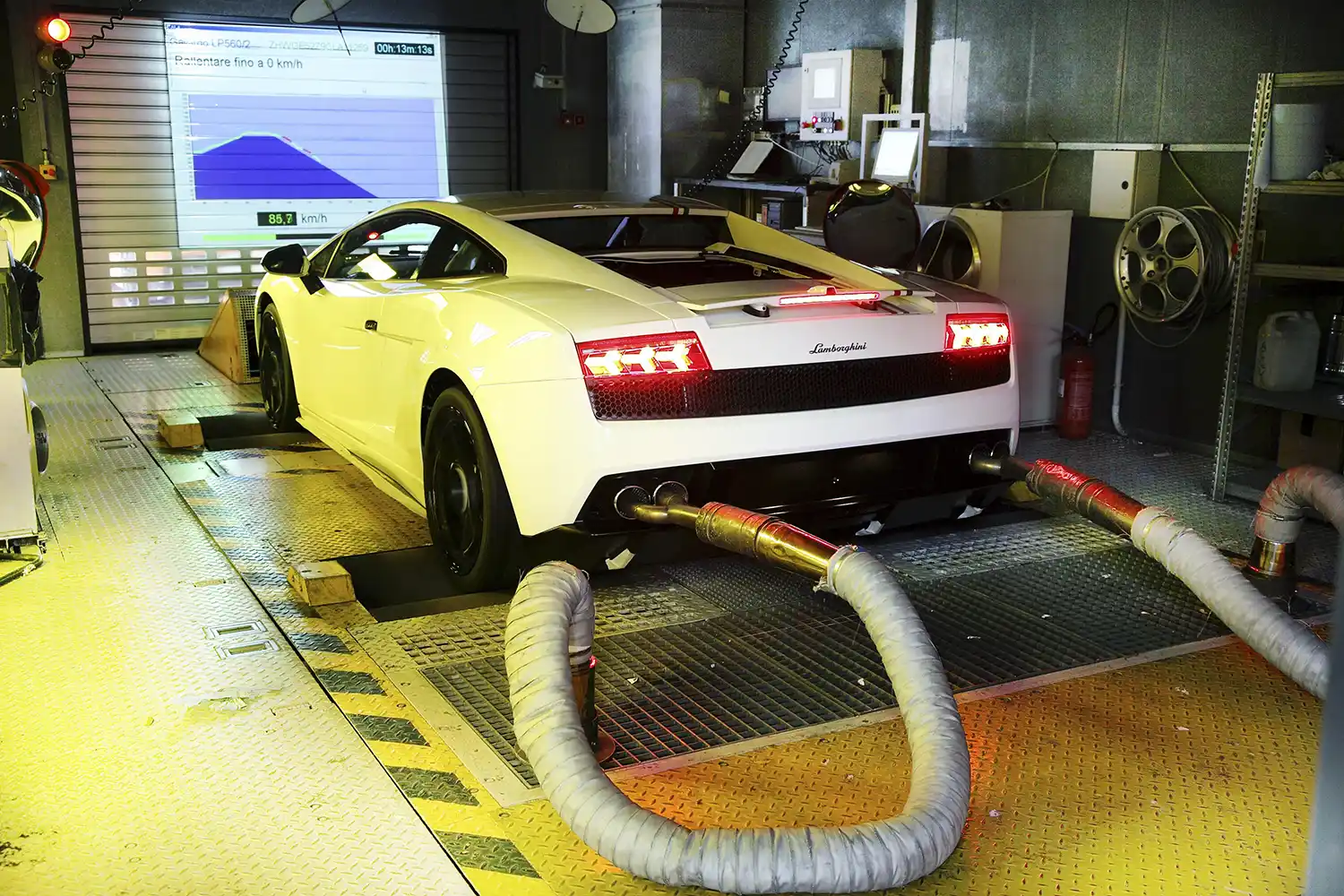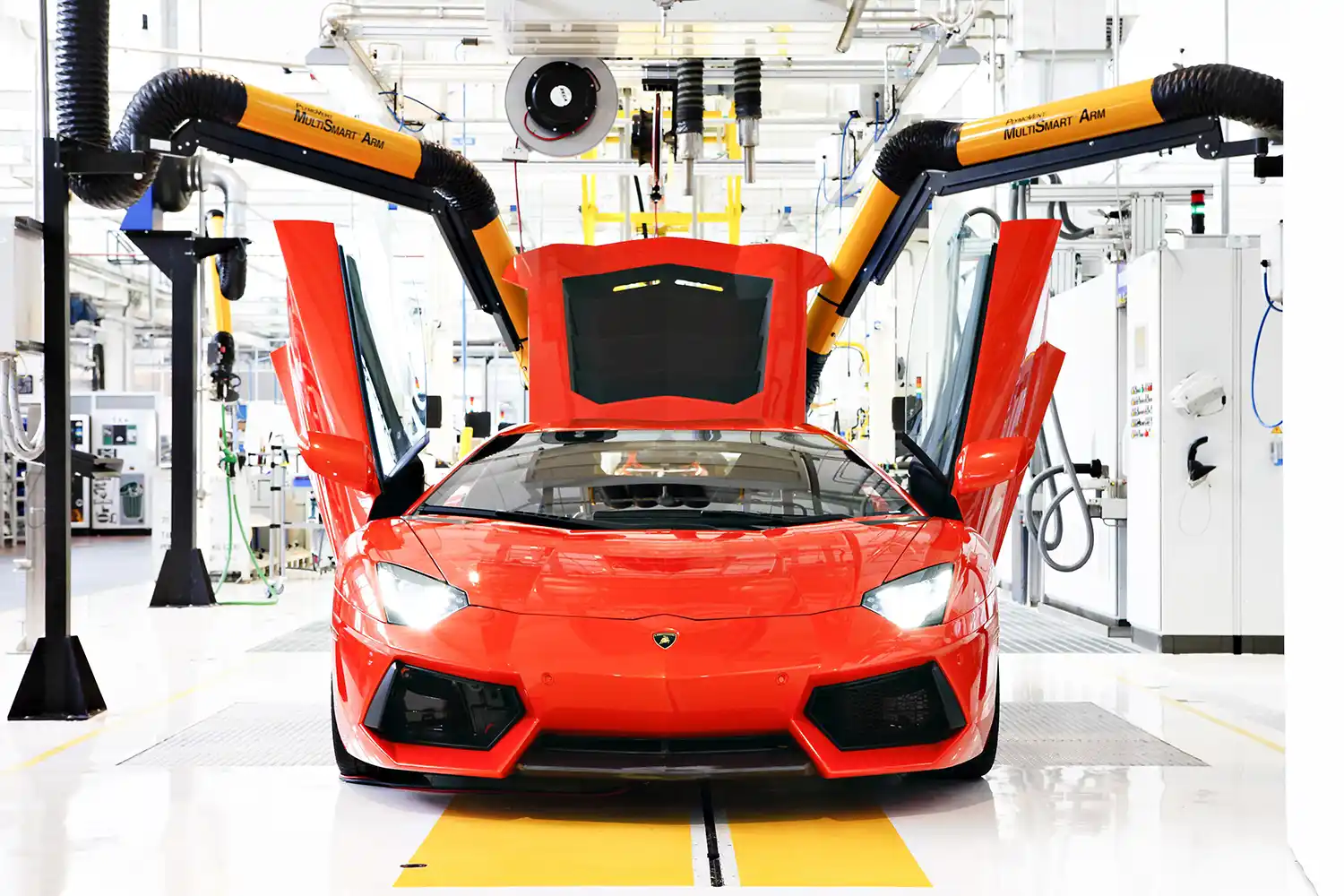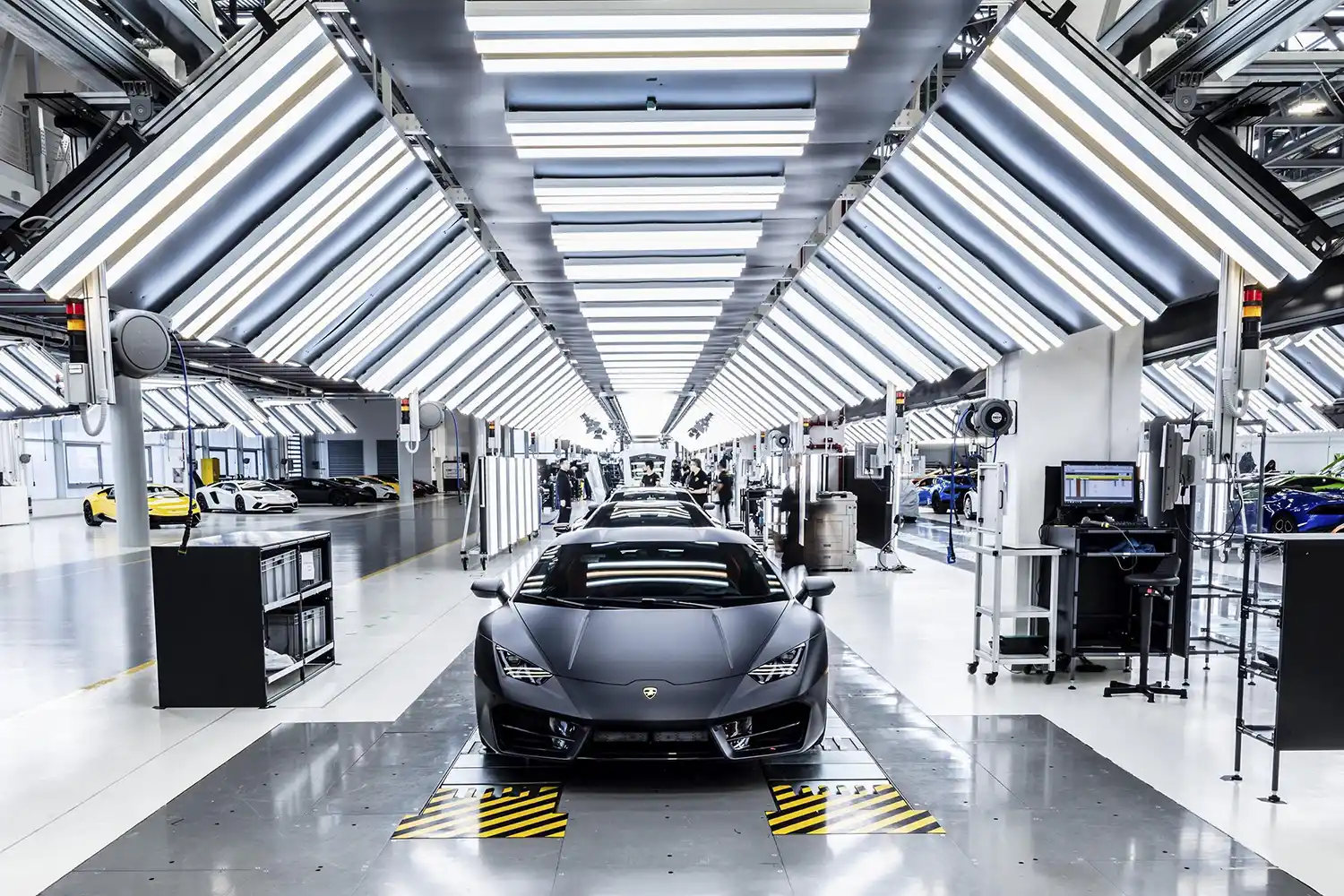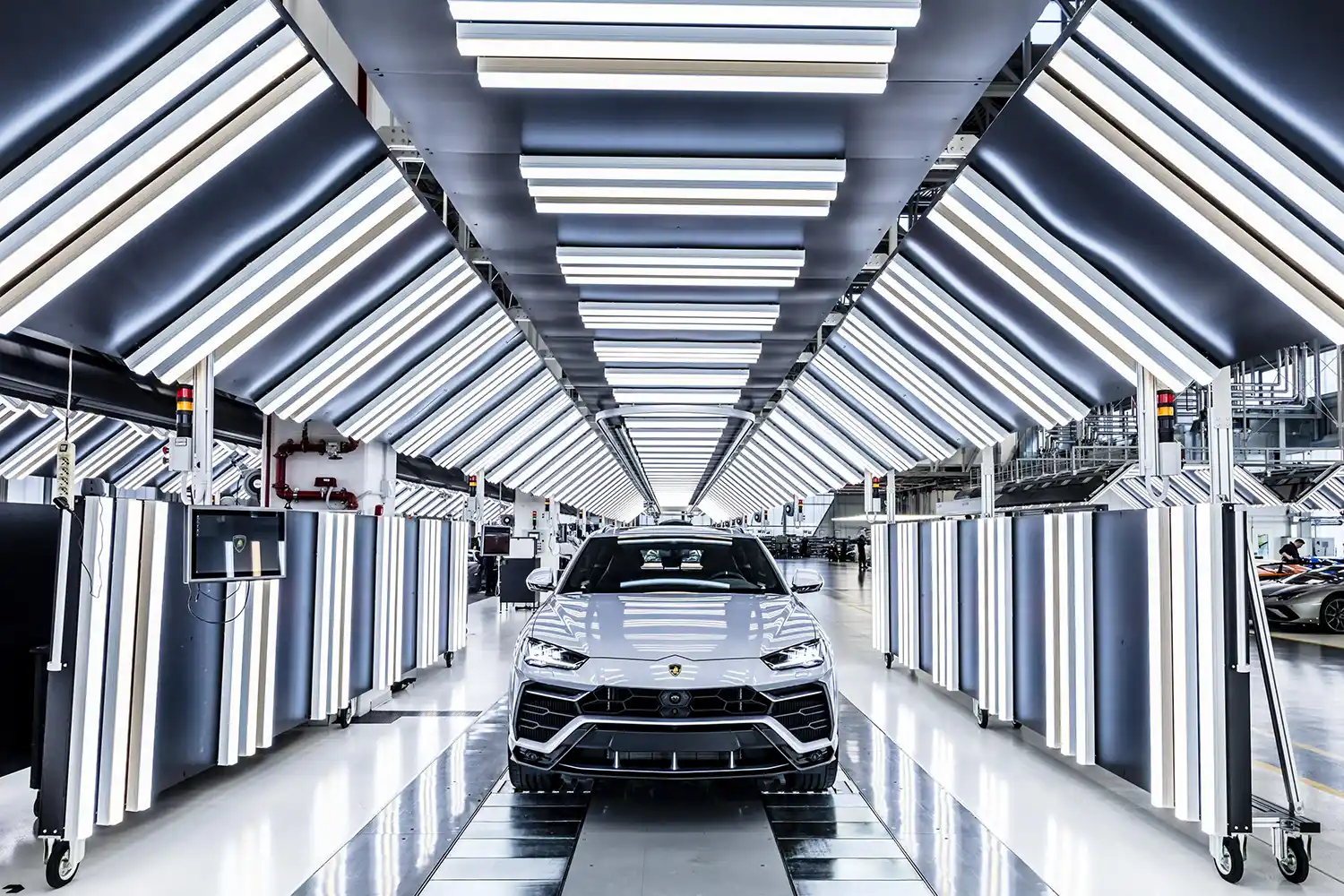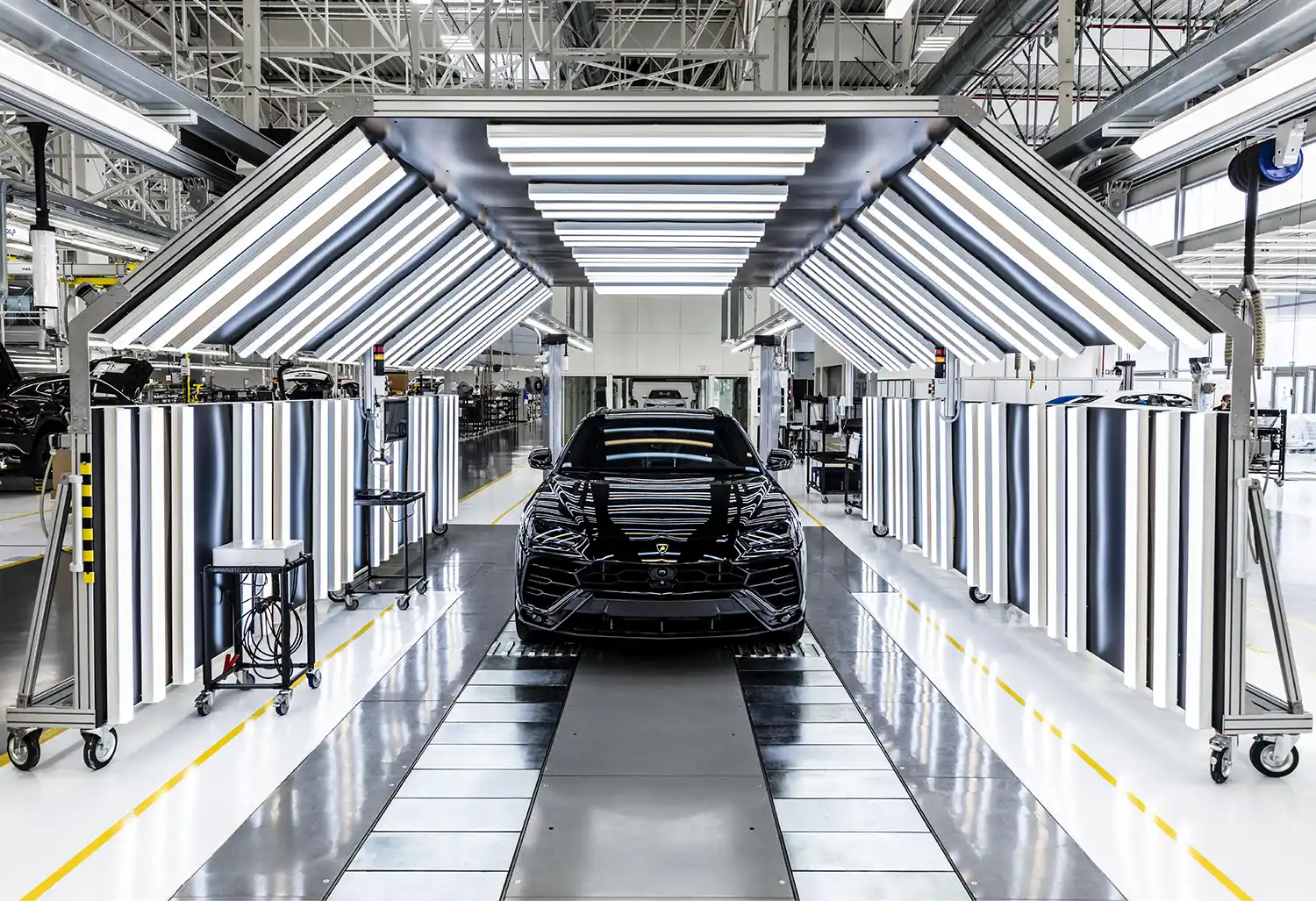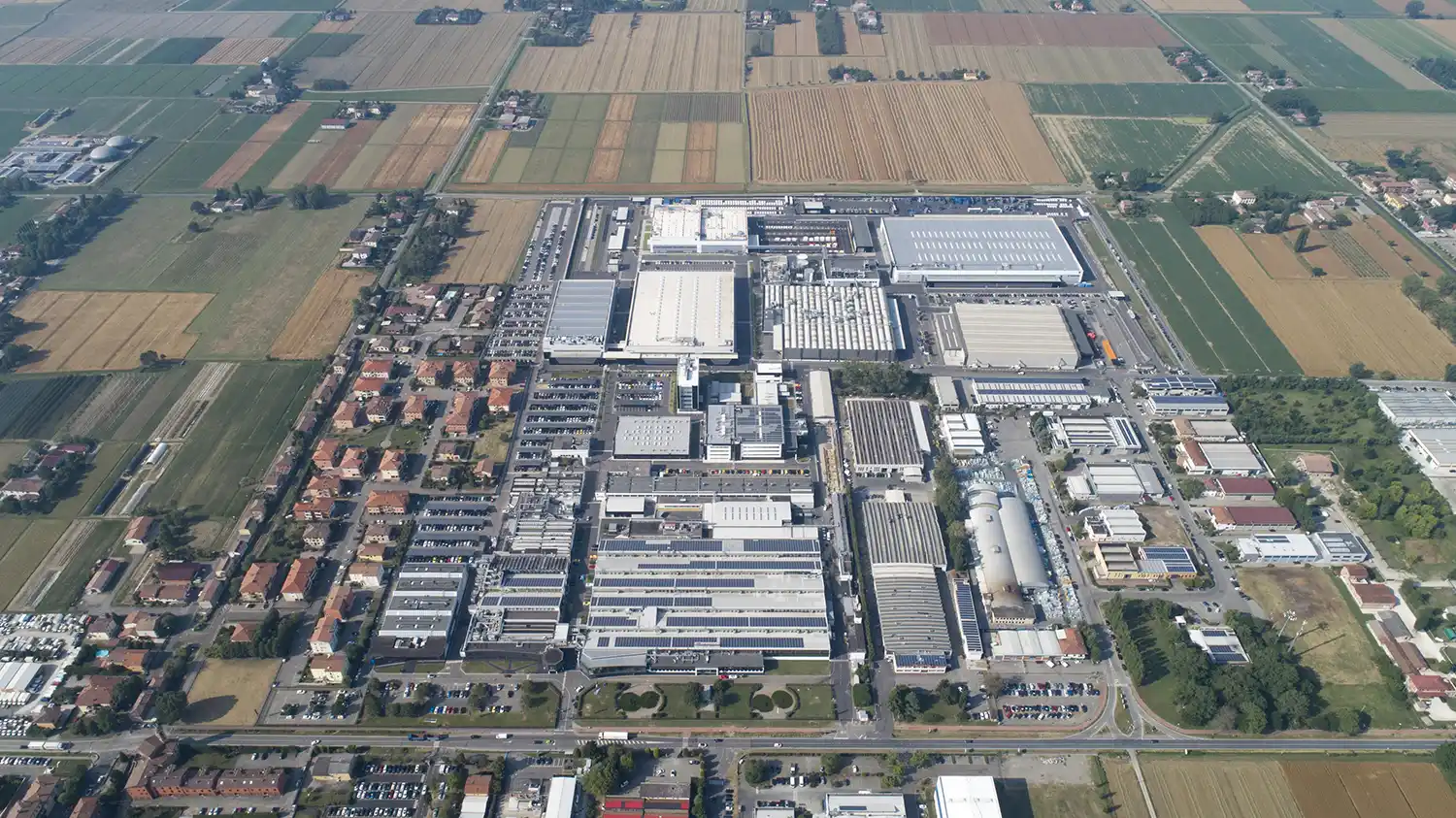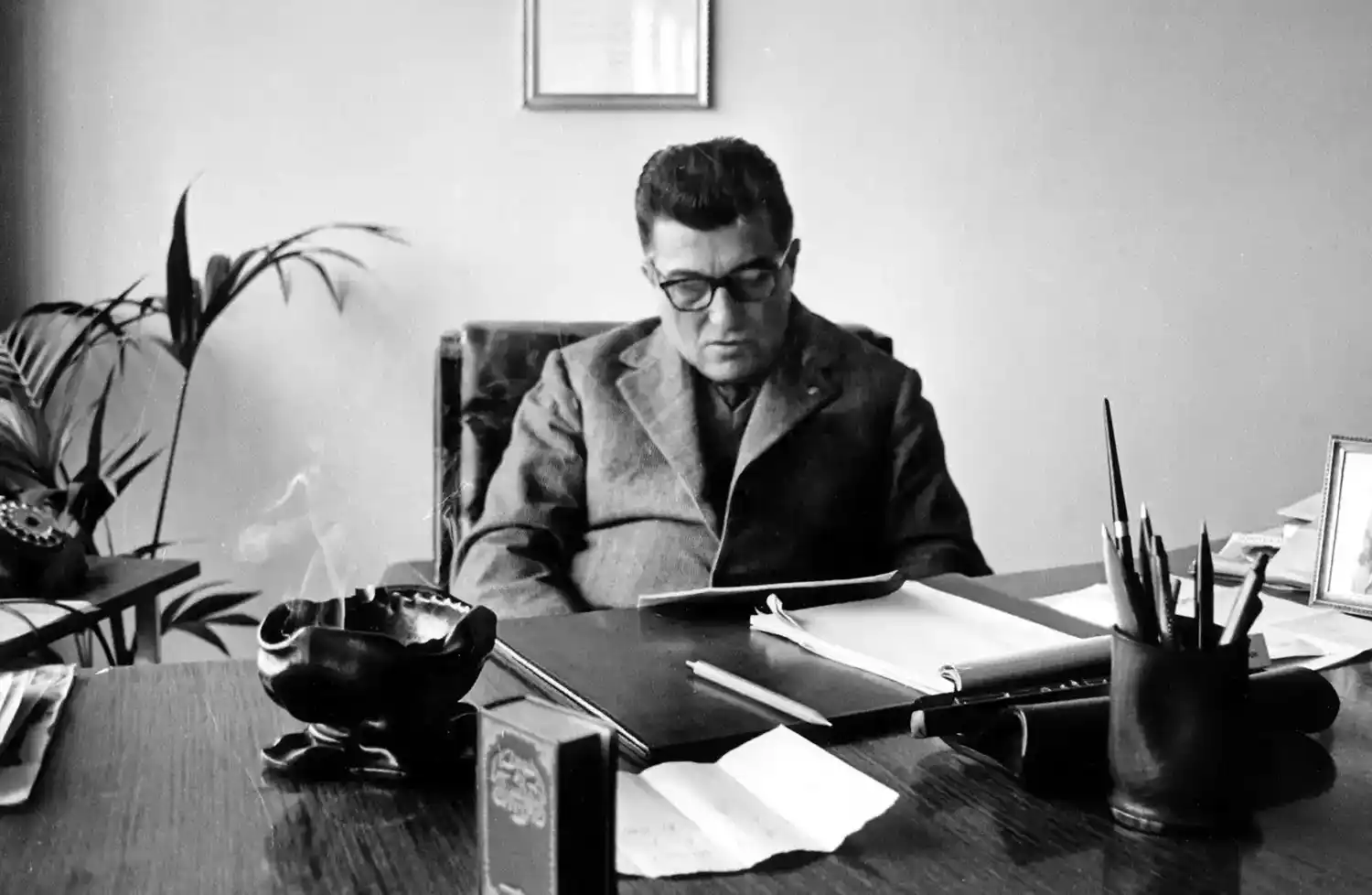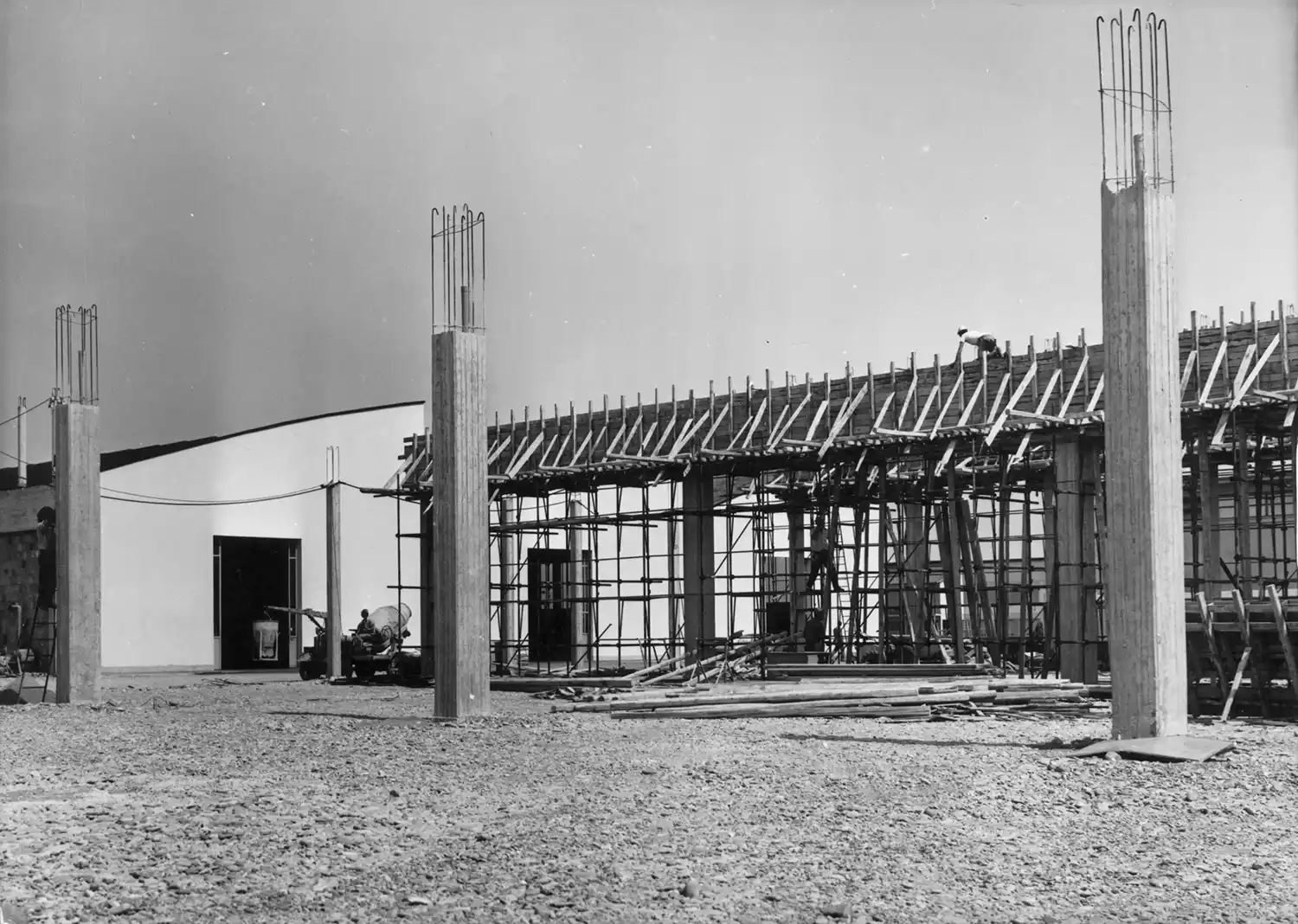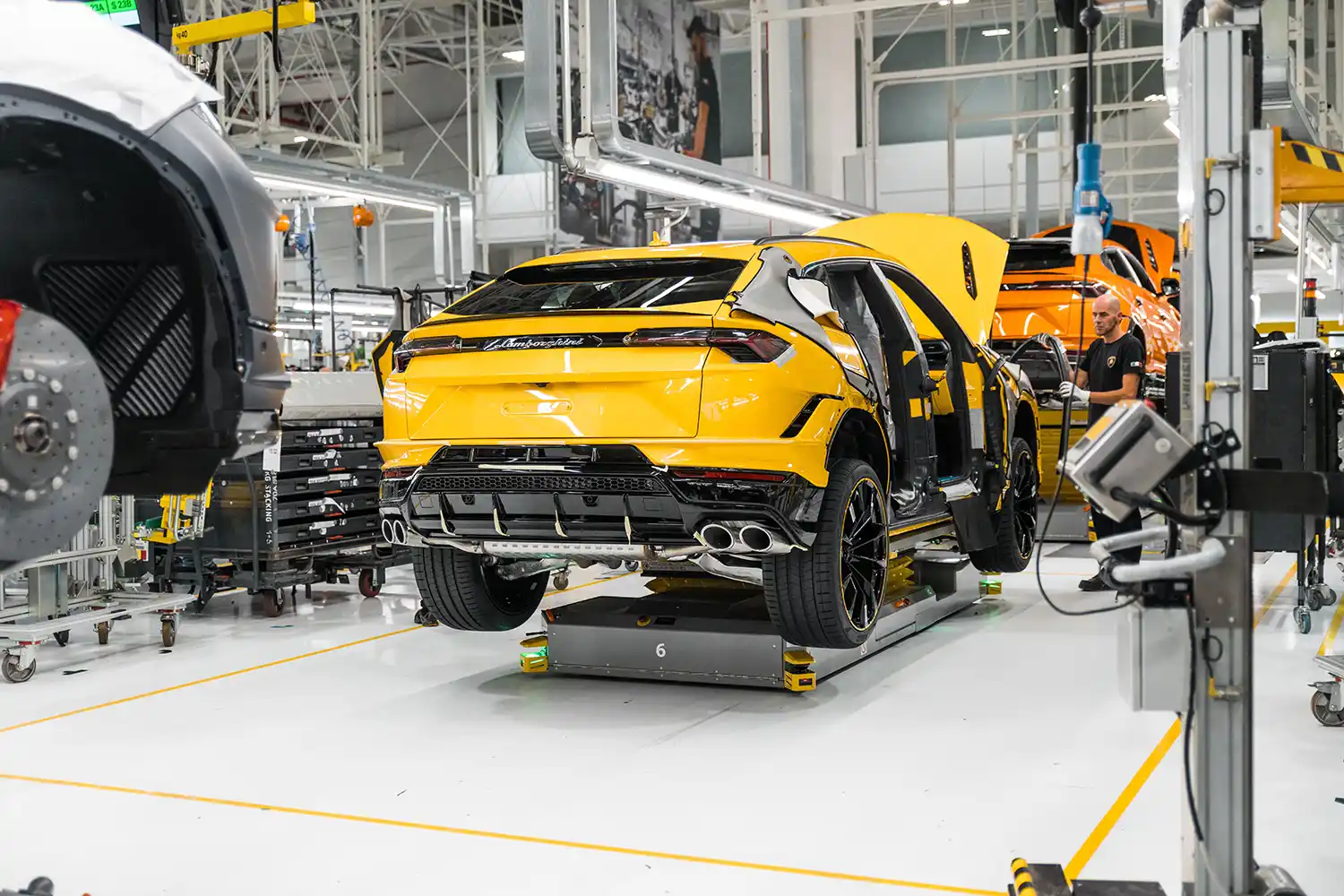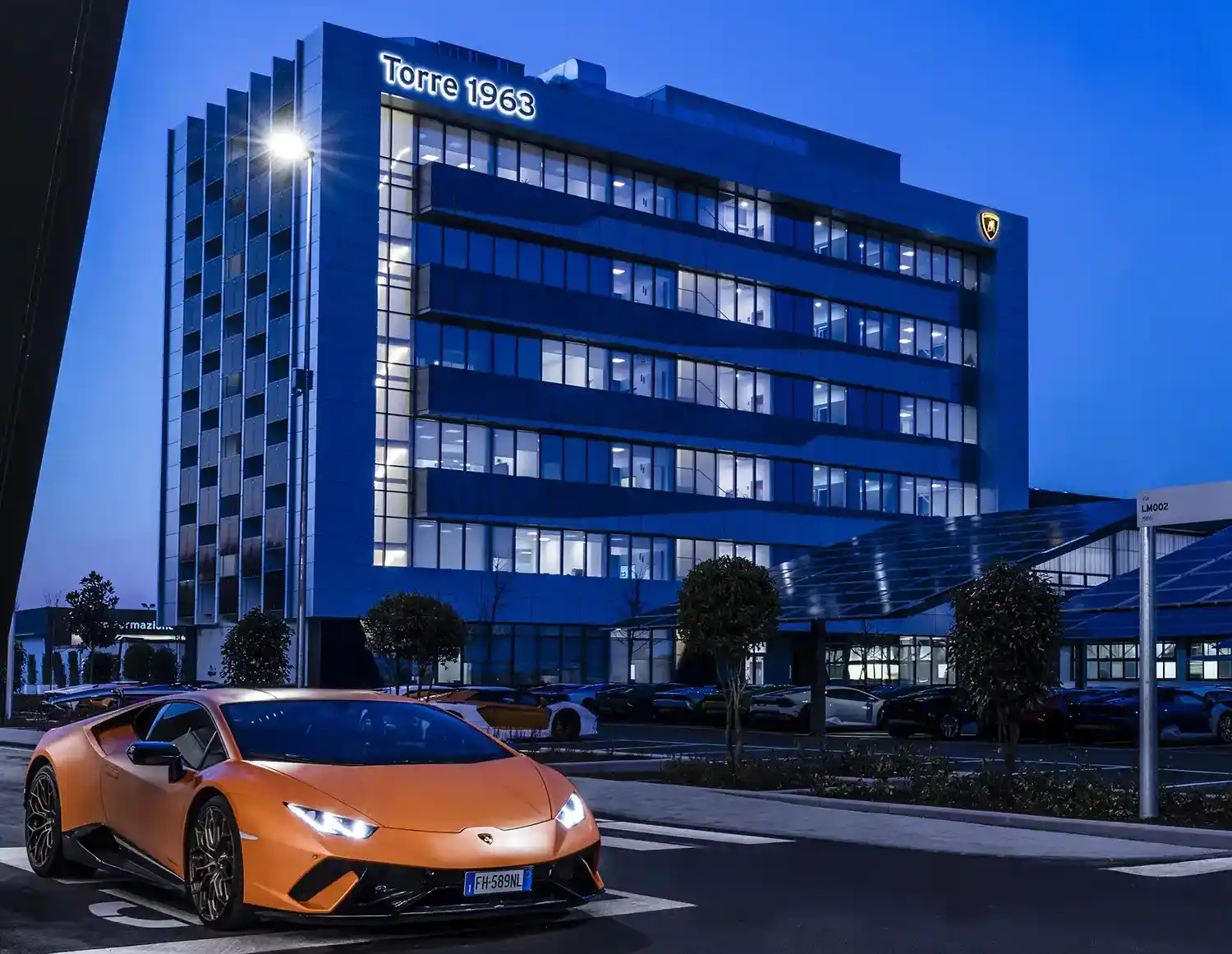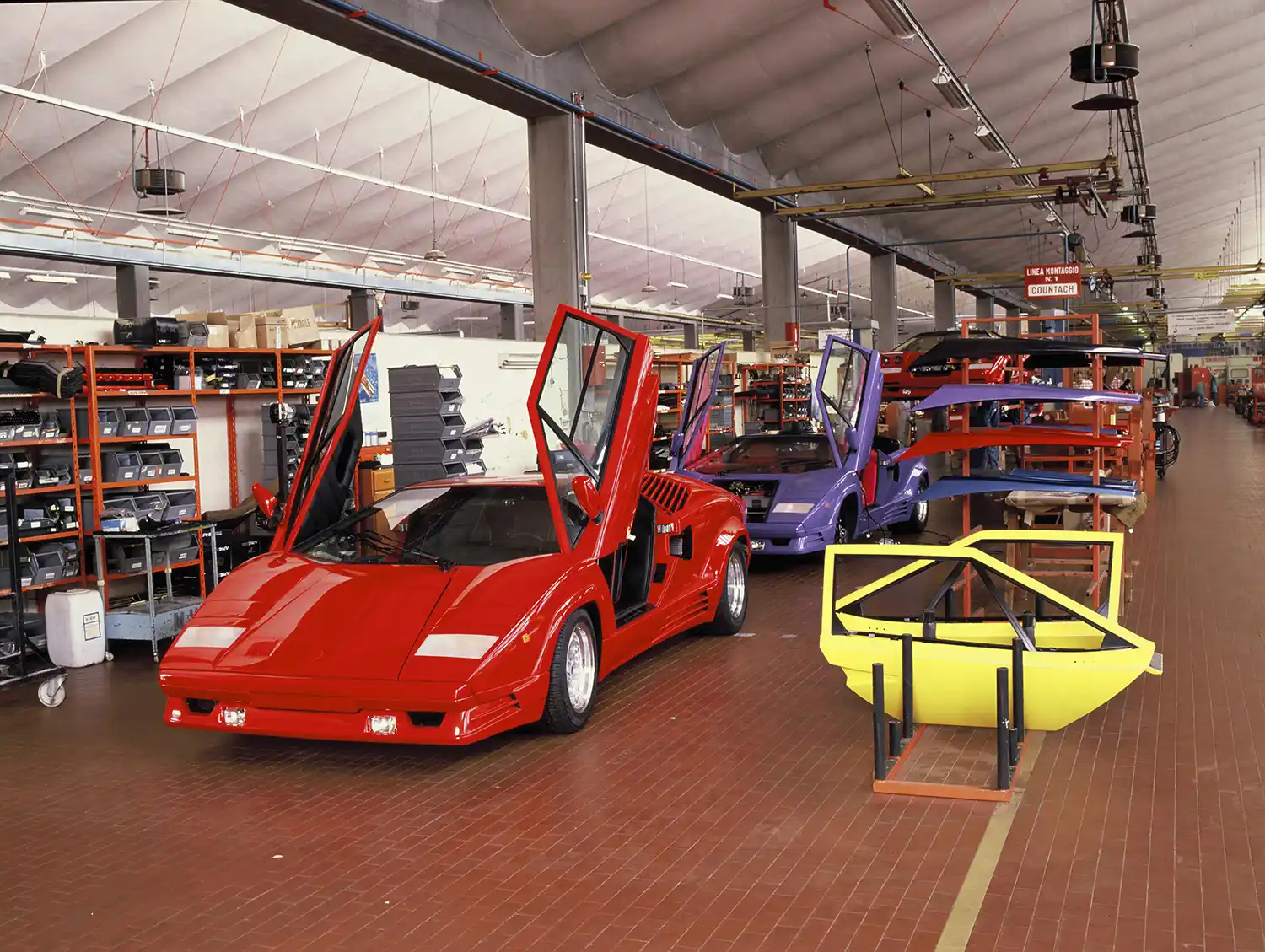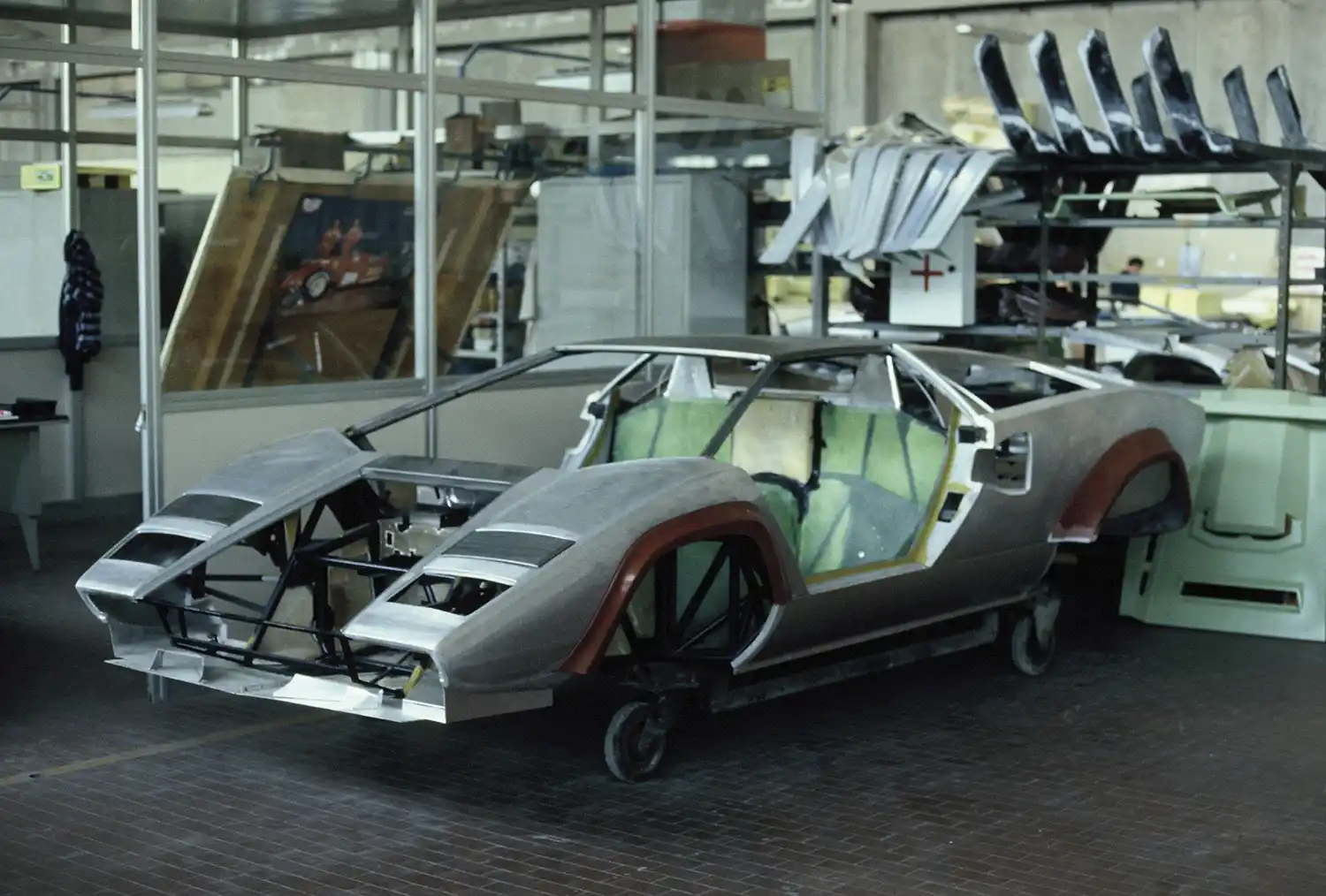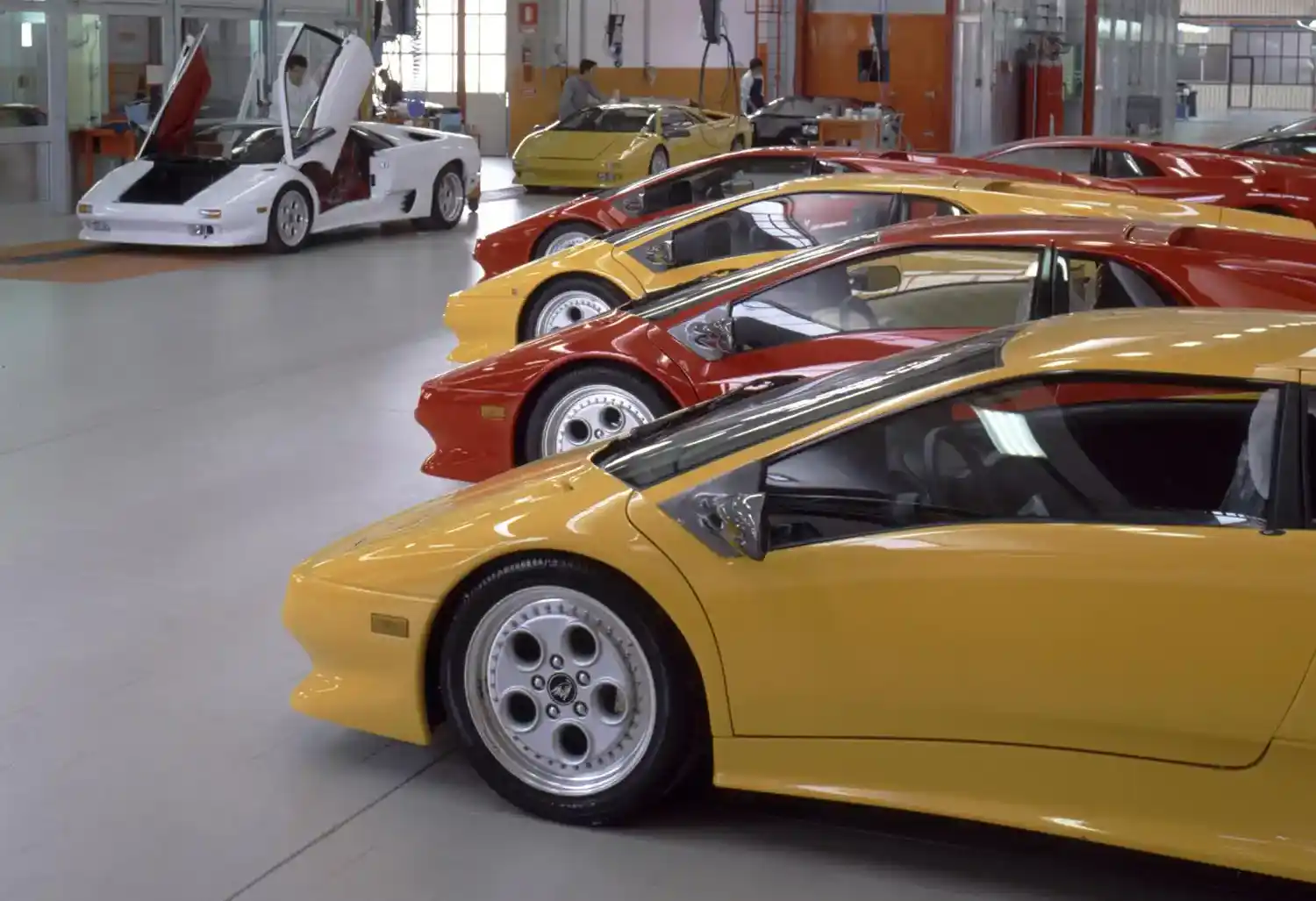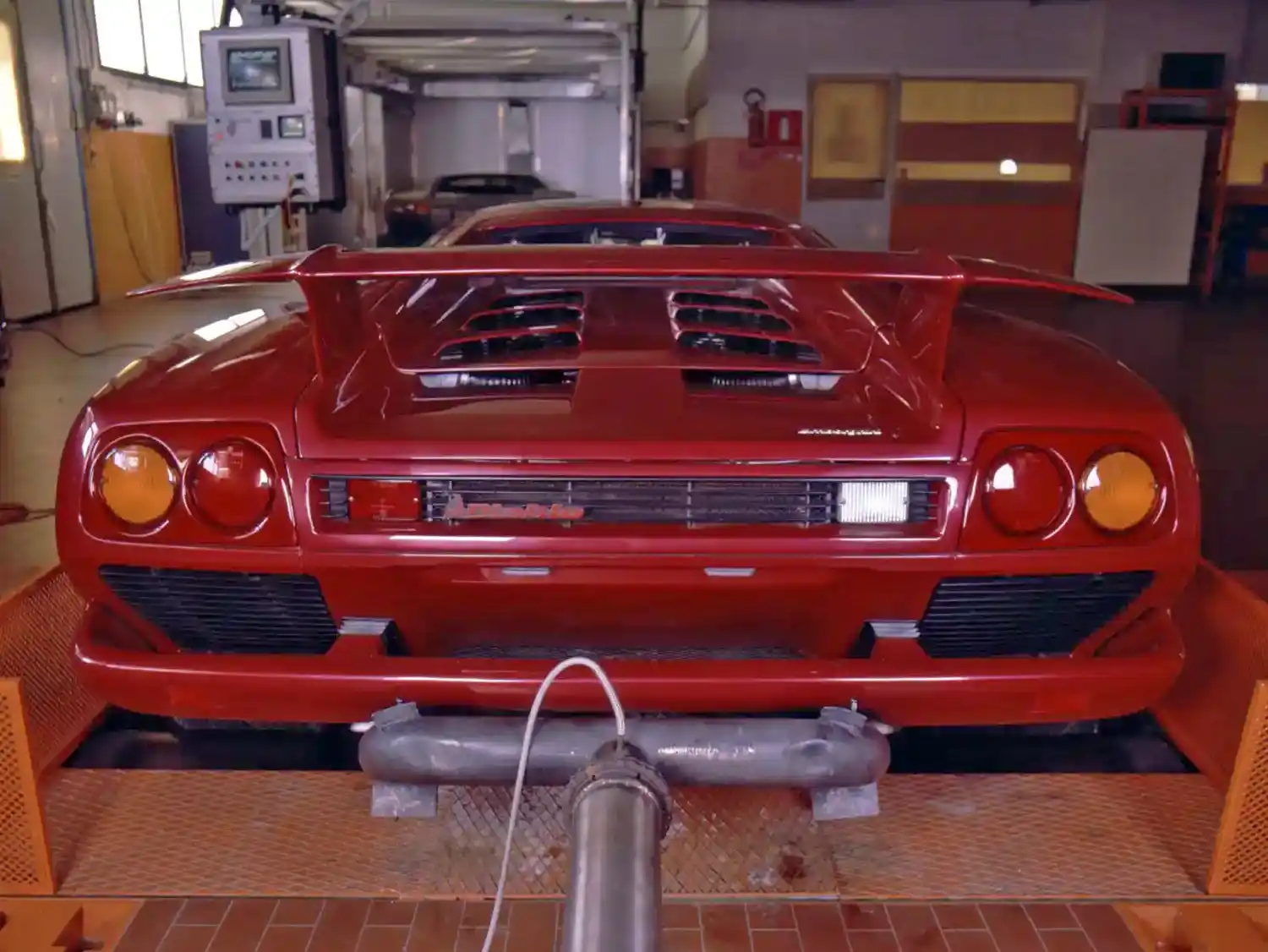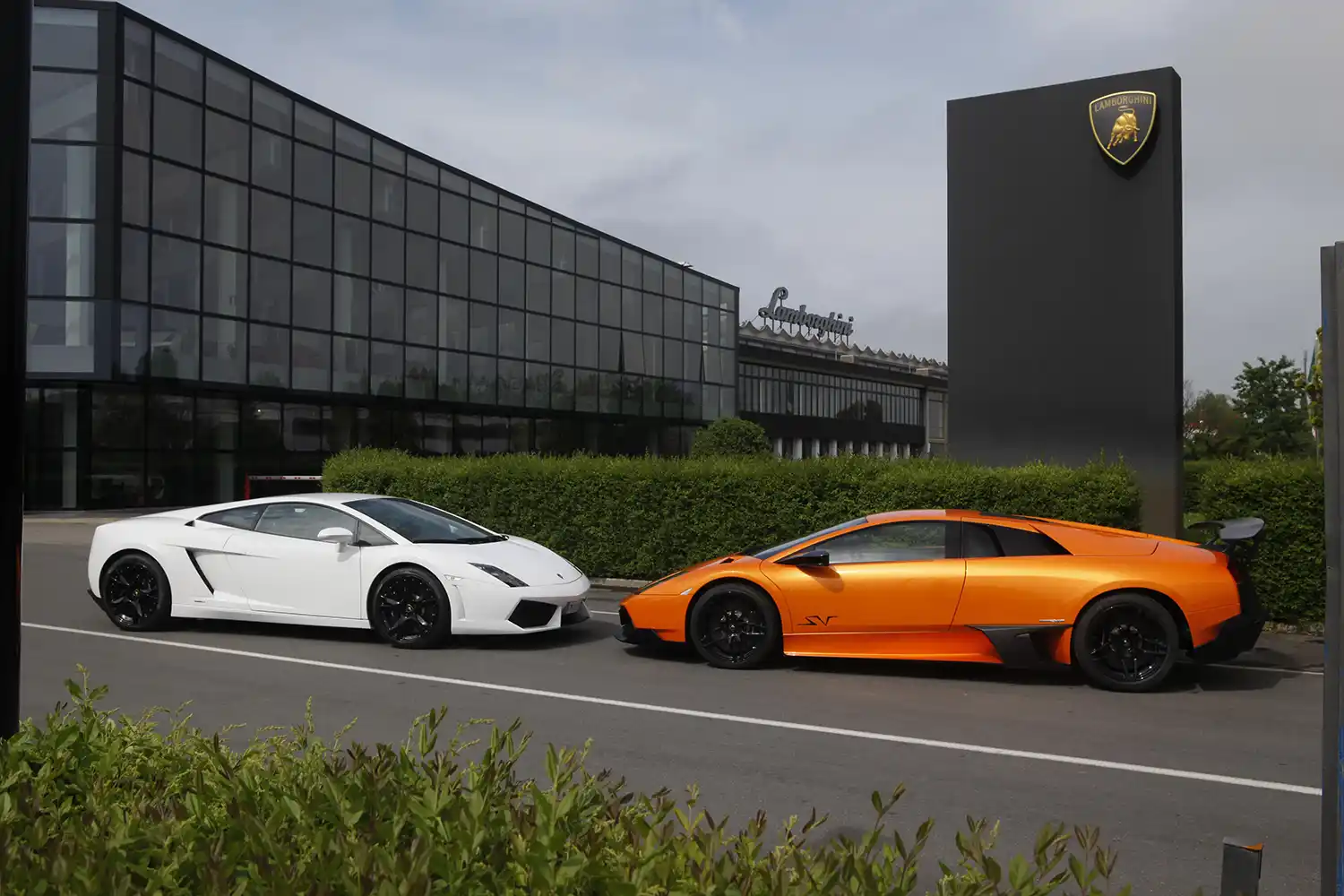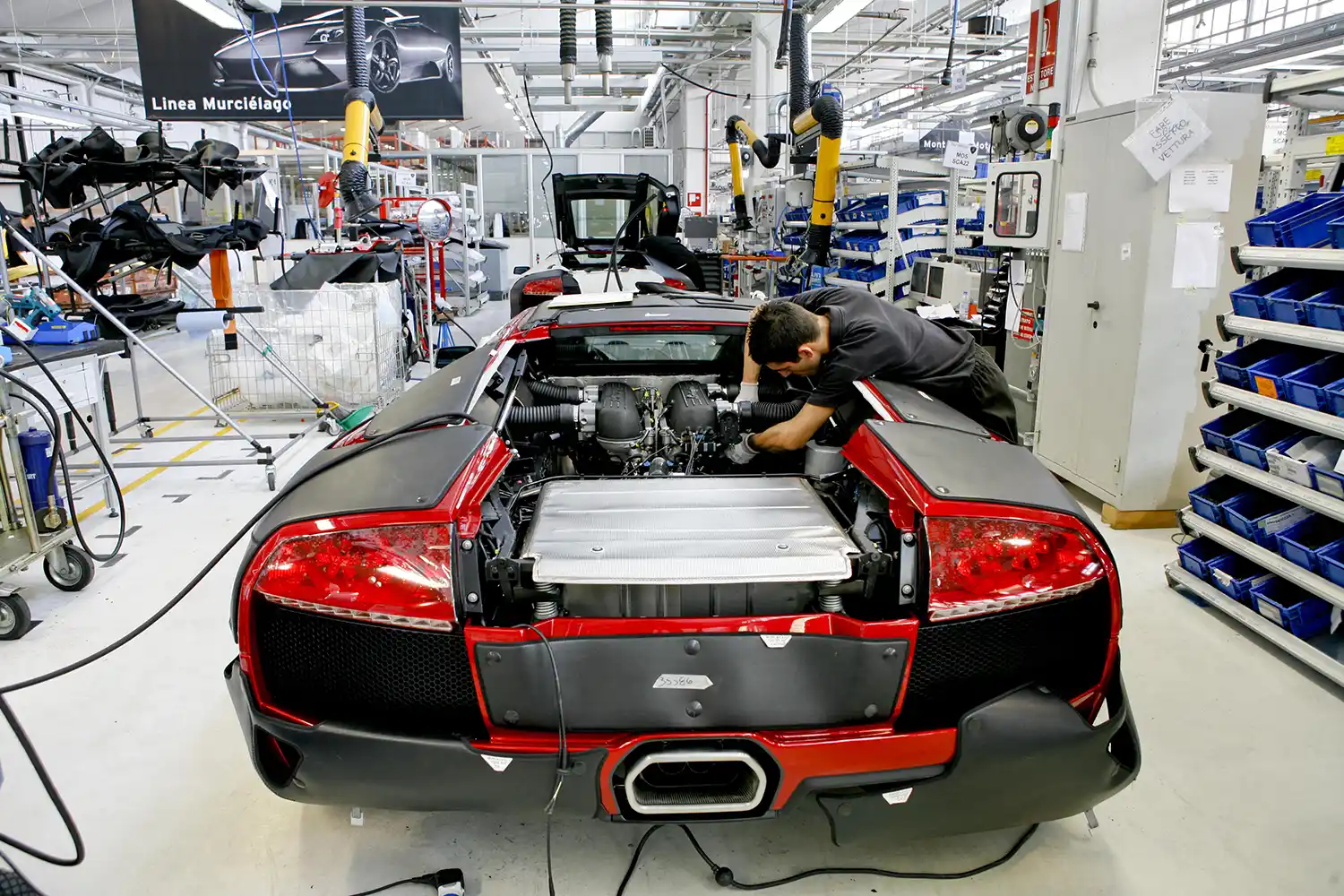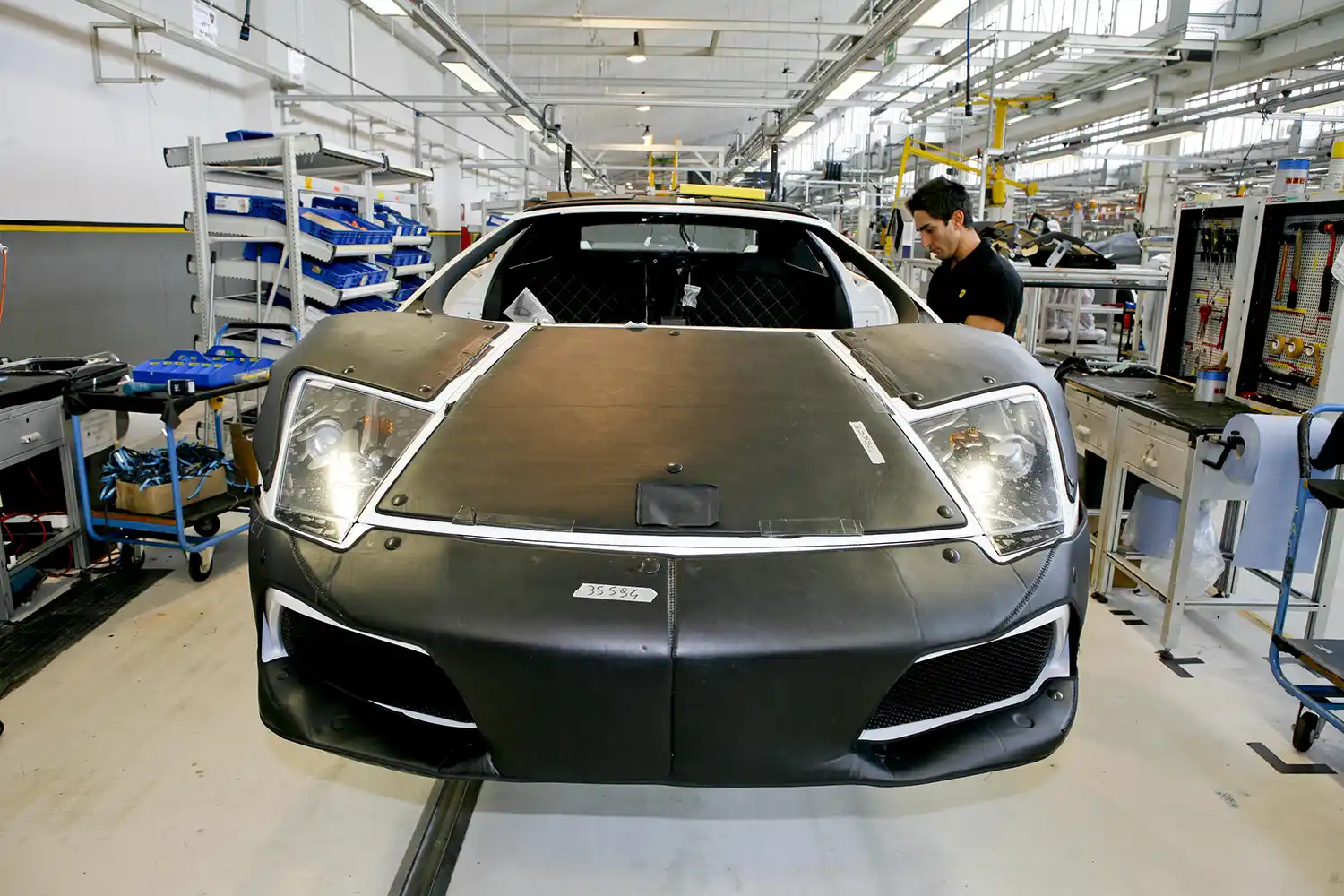
Today Automobili Lamborghini is a world-renowned company, with over 2,000 employees and delivering 9,233 cars in 2022. However, when Ferruccio Lamborghini founded the company in 1963, he started from scratch. Over the last 60 years, Lamborghini’s headquarters where the iconic cars continue to be created has undergone upgrades, extensions and reconfigurations based on production, environmental and technological needs, but it has never lost its original core structure.
Ferruccio Lamborghini looked for a location to set up his new company and chose the land to build his new factory in Sant’Agata Bolognese, just a few kilometers from his hometown of Cento. Construction of the initial part of the factory, considered to be one of the most modern of its time, was very fast and finished in just eight months between the autumn and winter of 1963. On October 20 of the same year when Ferruccio Lamborghini invited the press to the launch of the first Lamborghini car, the 350 GTV prototype, the completed main structure of the factory was already visible in the photograph’s background.
In 1966 when the gearbox and differential also started to be manufactured in-house, the production, offices, test rooms and service workshop could be found in the 12,000 m2 covered area of the original structure. There were two production assembly lines: one for the engines and mechanical parts and the other for car assembly with ancillary machinery for parts production and vehicle tuning. The offices, spanning 260 meters and located along the front and in the center, included the president’s office and the offices of the technical and sales departments. On the right side of the building were the test rooms and on the left the customer service workshop and staff rooms. Right from the start, Lamborghini focused on the use of technologically advanced machinery, combining the artisan skills of the workers with the most advanced technology available, a value that remains at the heart of the company’s industrial vision today.
On October 18, 1968, Lamborghini announced the imminent completion of three new industrial buildings, adding 3,500 m2 of covered area. These were buildings that, as well as strengthening the production facilities, would also create a modern, well-equipped test department. The photograph accompanying this press release is now iconic given that it shows, in addition to the department under construction, a 400 GT, an Islero, an Espada and two Miura.
Production went from 67 Lamborghinis produced in 1965 to 425 in 1971, falling to 55 in 1979 due to the economic crisis of the 1970s. The 1980s marked a resumption of production, reaching 470 cars produced in 1987 together with 300 marine engines.
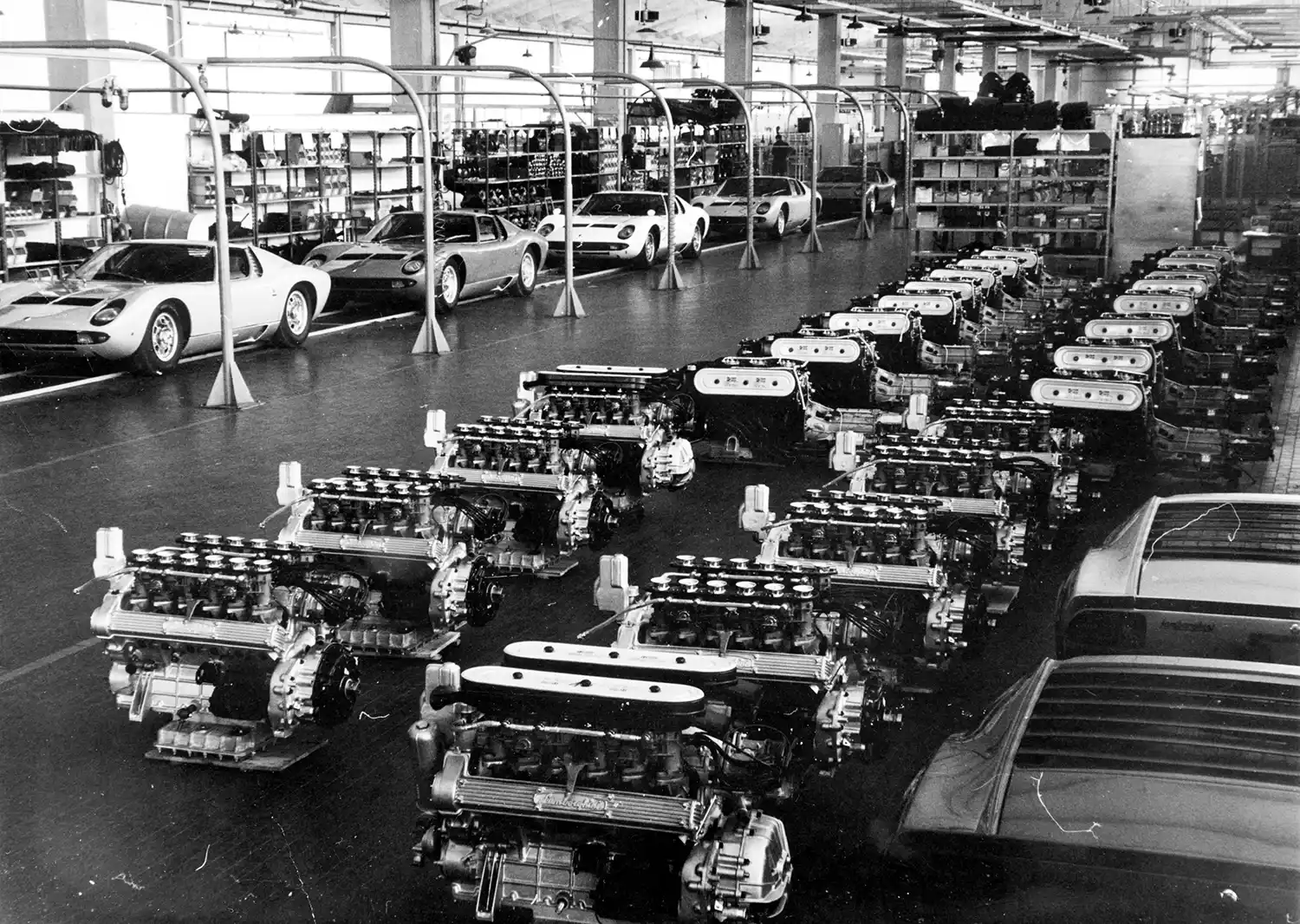
In 1983, Lamborghini launched the development and use of carbon fiber for the first time. The new ‘Esperienza Materiali Compositi’ Department (known as E.Co), was set up thanks to the arrival of know-how from Seattle that was developed from the first carbon fiber and Kevlar components of the Boeing 767. The first carbon fiber chassis prototype of the Countach Evoluzione was created: this was the first use of composite materials by Lamborghini and an absolute first for a project of this type for a road car.
In 1990, equipment required for research, development and testing in the field of electronic systems and new composite materials was purchased. A testing and development workshop for emission control systems was also created, allowing this process to be managed directly in-house from that point onward.
Joining the Audi group in 1998, the speed of development at Lamborghini grew exponentially, as did the number of cars produced and the number of employees. In 2000, Lamborghini produced 296 cars and employed 440 staff; in 2001, the renovation of the headquarters was completed, the first after many years, involving the construction of a new office building, a two-story museum and a new research and development area, in addition to the investment in assembly lines and canteen that were completed in August 2001 for a total of 155 million Euro.
On October 25, 2002, the opening of the Lamborghini Centro Stile was announced for late spring 2003 on the occasion of the company’s 40th anniversary. The center was to open within a designated area of a new building housing customer service, the center dedicated to classic Lamborghini cars and to the marine engine sector. In 2003, the company was undergoing rapid growth, occupying an area of 100,000 m2, of which 28,900 were covered, producing 1,305 cars and with 624 employees, 145 of which were employed in research and development. In 2006, with an impressive +30.4% growth compared with the previous year, 2,087 cars were produced.
In November 2008, work on expanding the Finishing department began, an area dedicated to final checks on the cars exiting the assembly line; in October the new integrated logistics platform was inaugurated, now located within the Sant’Agata Bolognese facility in a new purpose-built building. The new logistics center covered 11,000 m2, guaranteeing space for 14,052 pallets.
In 2011, the new Aventador LP 700-4 was launched, equipped with an innovative carbon fiber monocoque designed and manufactured entirely in Sant’Agata Bolognese. For the Aventador body, made of 100% carbon fiber, Lamborghini decided on complete in-house production and launched the “CFK – Lamborghini Carbon Production”, further establishing Lamborghini’s leadership in the super sports car sector for the production and development of composite materials, which continues today.
2011 also saw the opening of Lamborghini Park, which today allows the company to advance two of its most important projects in sustainability and research into local environmental impact: biomonitoring with bees; and the Oak Forest biodiversity and capture of CO2 experimental study conducted in partnership with the Municipality of Sant’Agata Bolognese and the Universities of Bologna, Bolzano and Munich.
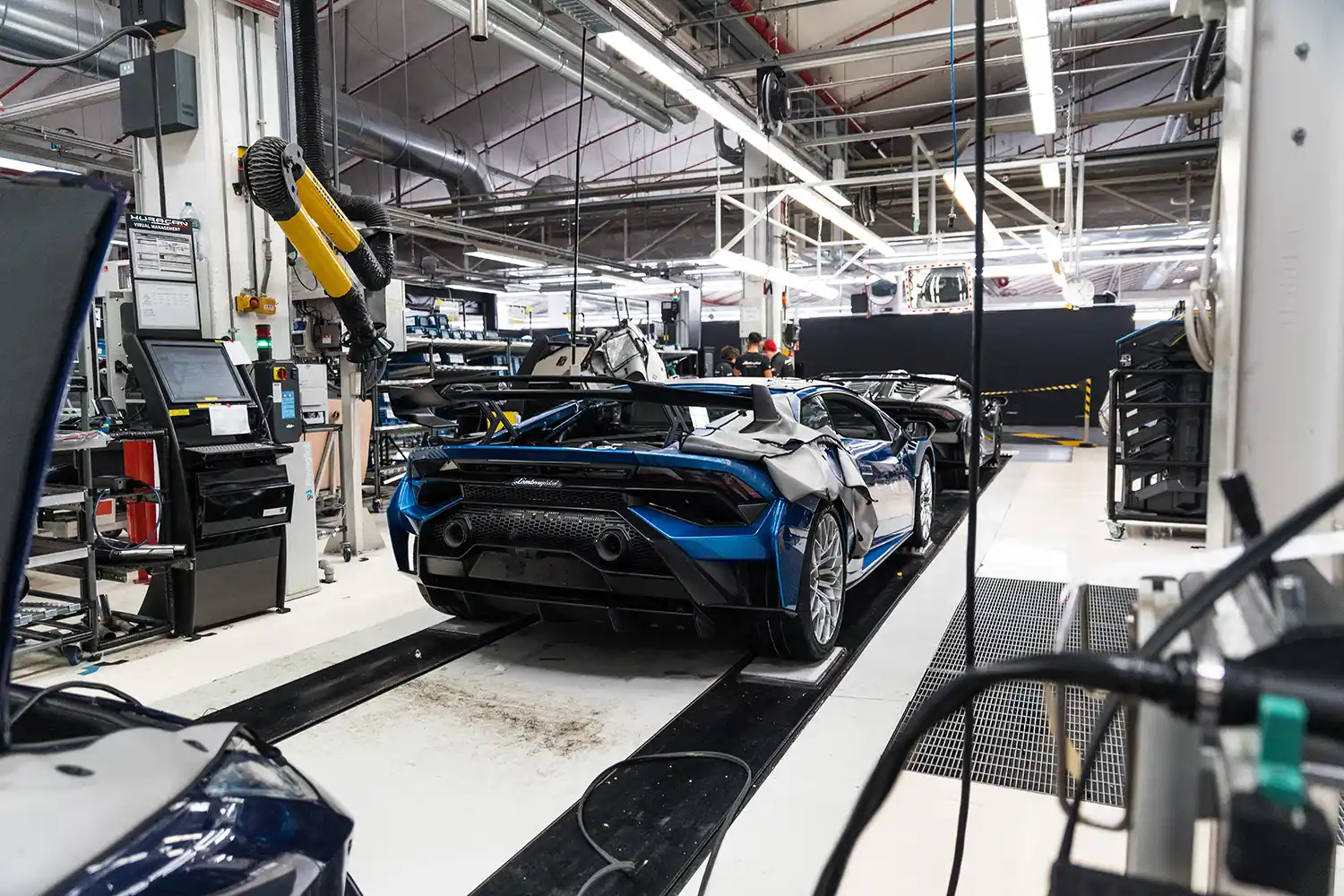
In 2012 a completely new building was erected that houses the prototype development (protoshop) and the pre-series center: the first industrial multi-story building of Energy Class A and N-ZEB (net zero emission building) in Italy.
In 2015, Automobili Lamborghini inaugurated its new trigeneration and district heating systems, two of the main projects that led to the Sant’Agata Bolognese company’s attainment of CO2-neutral certification for the entire plant. The event celebrated the achievement of a key goal of Lamborghini’s environmental sustainability strategy, initiated a few years previously and which continues today.
In 2018 the third model arrived, the Urus Super SUV, with production in Sant’Agata Bolognese strongly advocated by Stephan Winkelmann, CEO and Chairman of Automobili Lamborghini. Supported by a historic protocol with the Italian Government and the Emilia-Romagna Region supporting a renaissance in the ‘terra dei motori’ region, the factory increased its covered area to 160,000 m2.
The new production facility in Sant’Agata Bolognese houses the new assembly line dedicated entirely to the Urus, the new finishing department for all Lamborghini models, and the new office building with LEED Platinum certification: the highest standard in the world for energy and environmental certification in building design and construction. A new test track was also built, with thirteen different surfaces especially for SUVs, as well as a new logistics warehouse, a second trigeneration power plant, and the new “Energy Hub” for centralized production of all energy carriers. The “Manifattura Lamborghini” production model was developed, which brings an innovative and sustainable approach combining craftsmanship with the most advanced technologies.
In 2019, the paint plant for the Urus was inaugurated and, since 2020, the shell supply chain has become more sustainable thanks to rail transport rather than road, achieving a CO2 cut of 85%. This sustainability is not limited only to the protection of the surrounding environment, but over the years will continue the company’s engagement on several fronts with people and the community in which it operates, as part of its increasingly widespread social responsibility.
In May 2021, Stephan Winkelmann announced the program “Cor Tauri Management”, an ambitious plan that will lead Lamborghini to electrify the entire product range in 2023-2024, with the introduction of a fully electric model at the end of the decade. These are significant steps within the broad program of decarbonization, part of the company’s holistic approach to its sustainability strategy as it works to continuously reduce the impact of not only the production site but of the entire value chain.
The long road frontage, part of the original 1963 construction, with the proud Lamborghini sign on the roof, is still the most visible part of the company today, the banner of a structure that has evolved over the years but whose DNA remains the same, always with an eye to the future.
